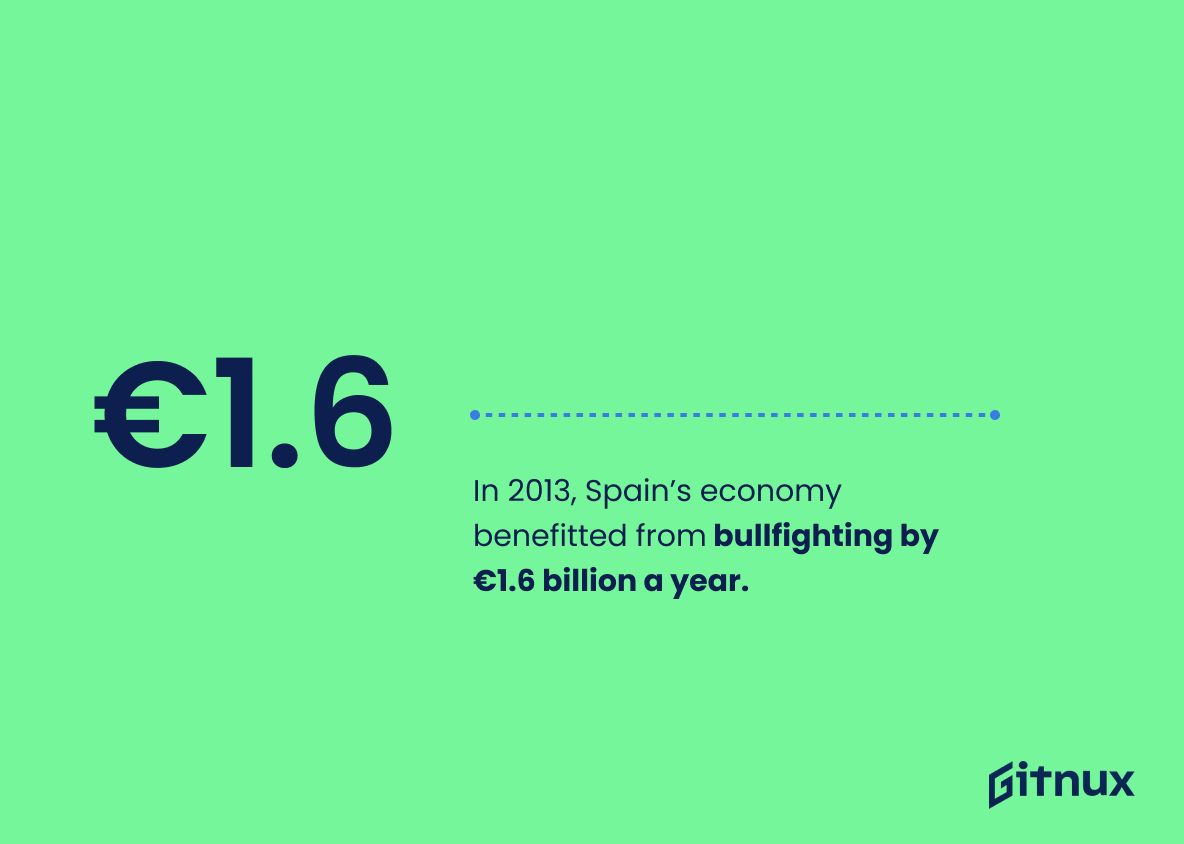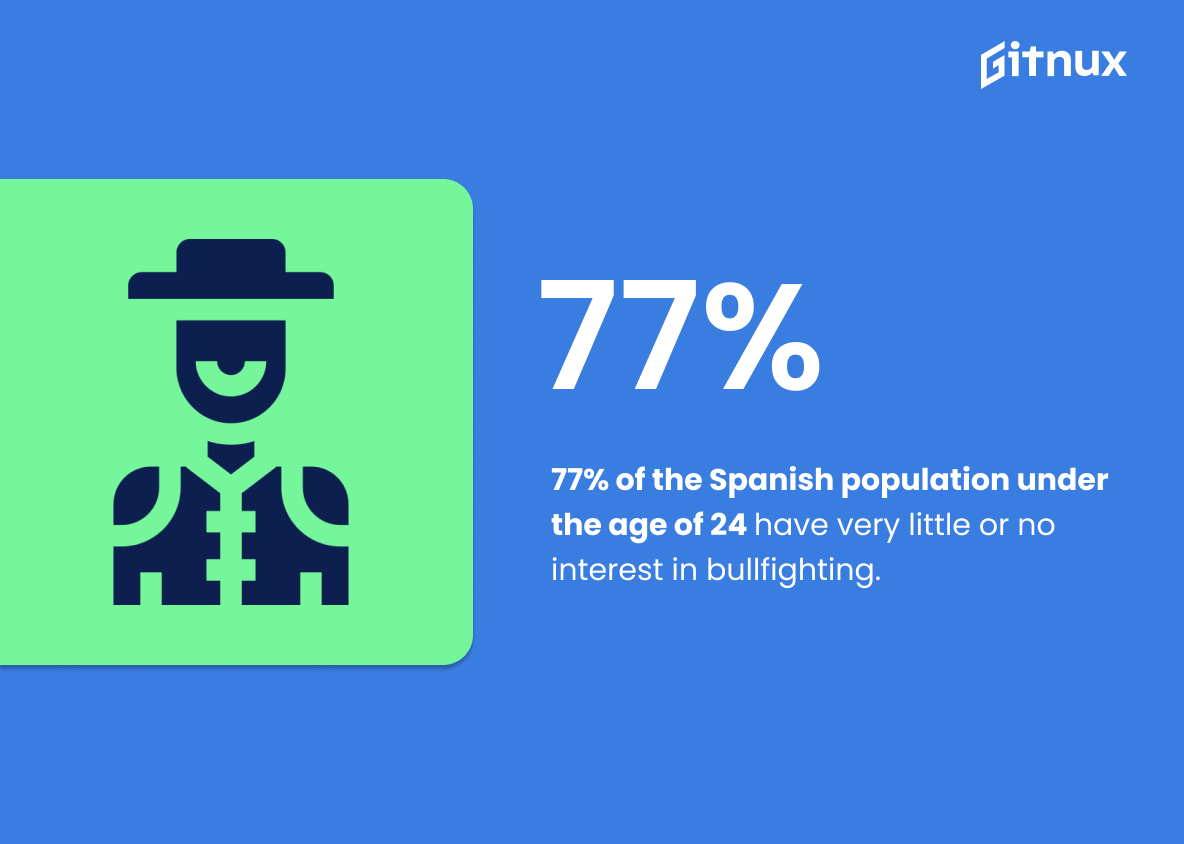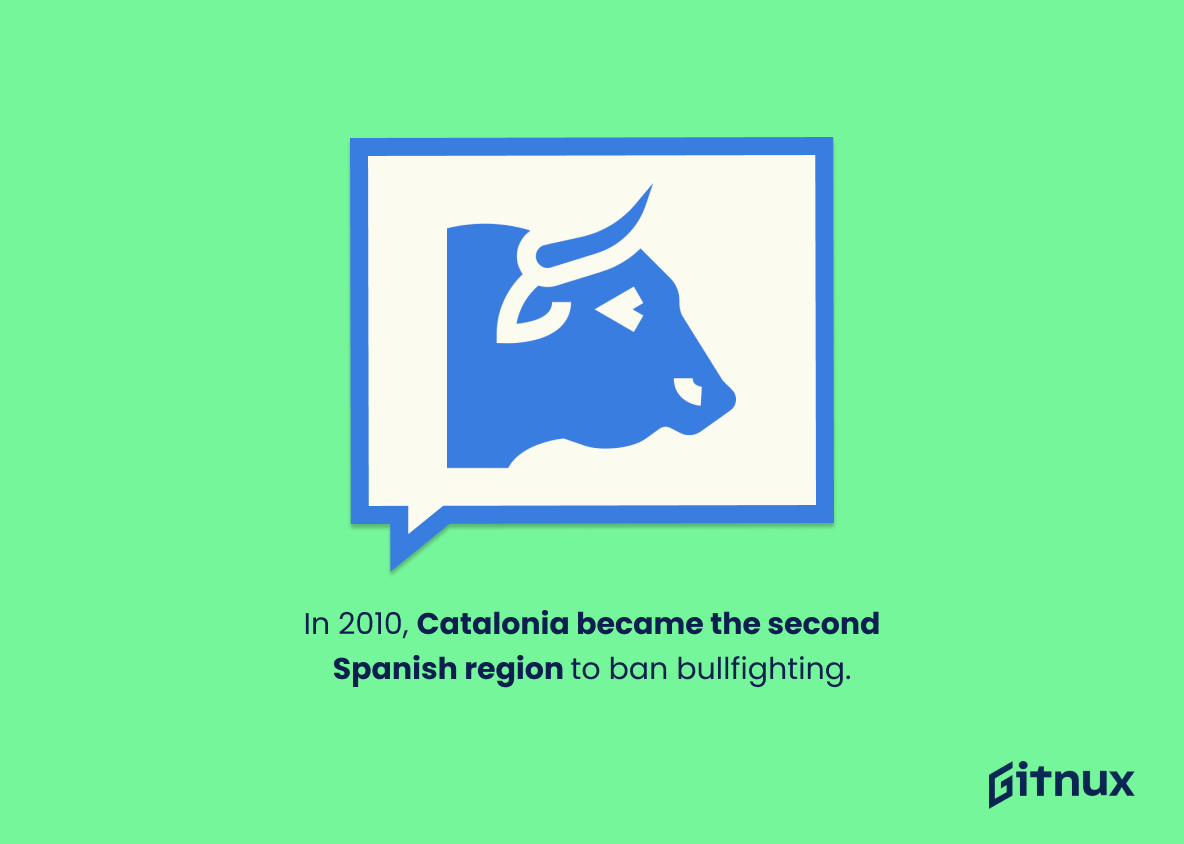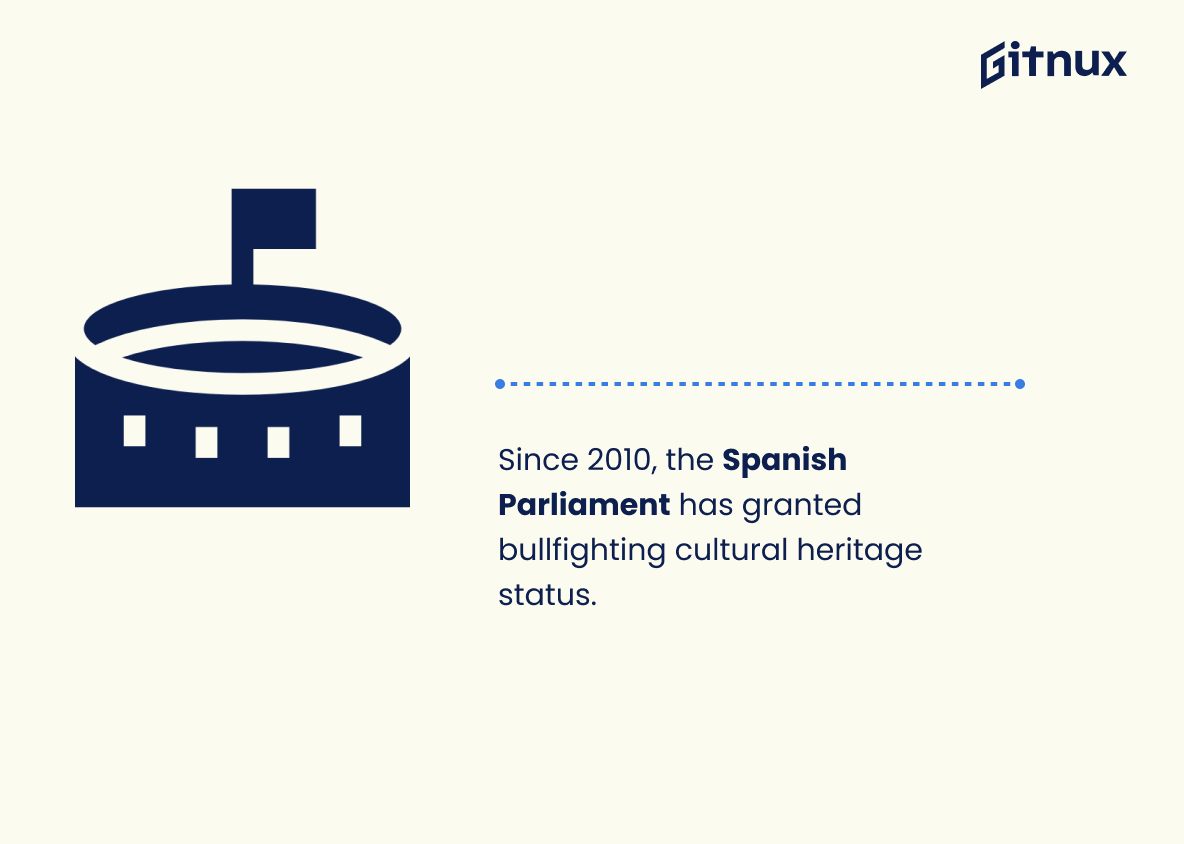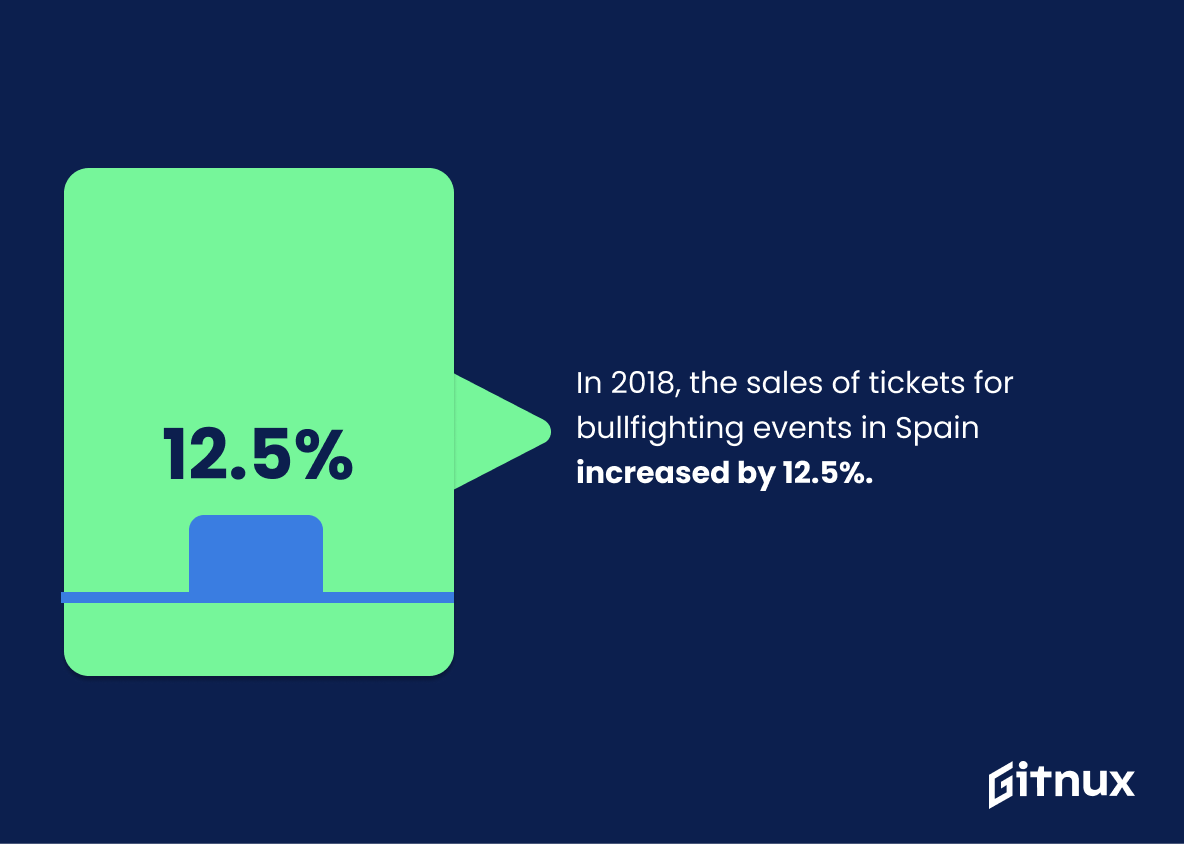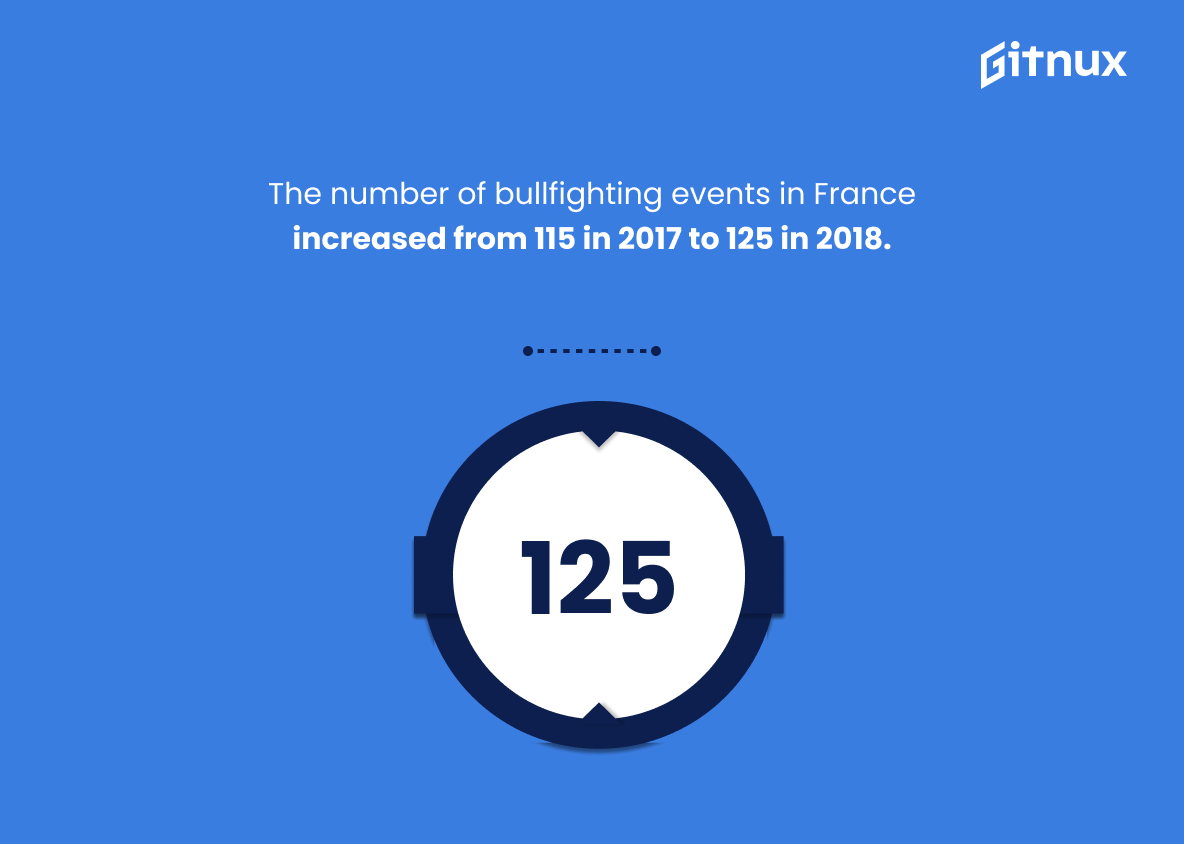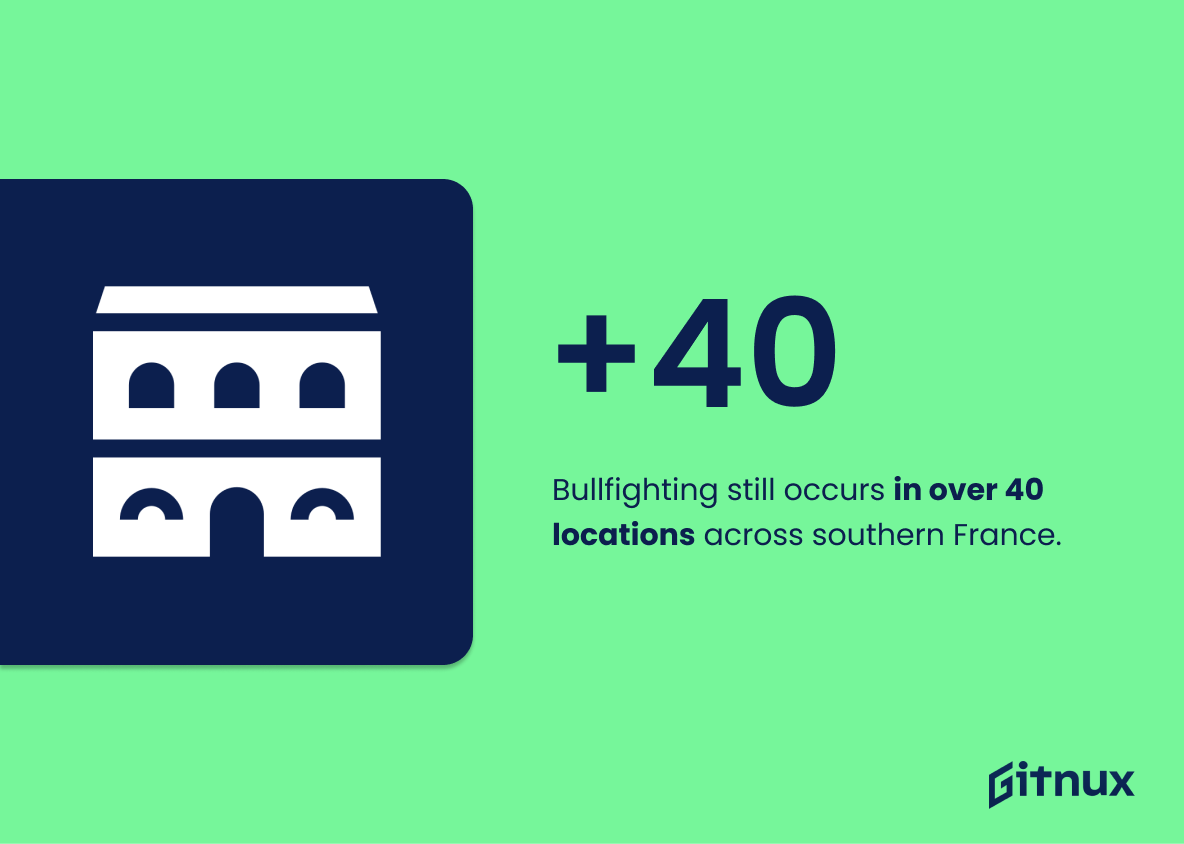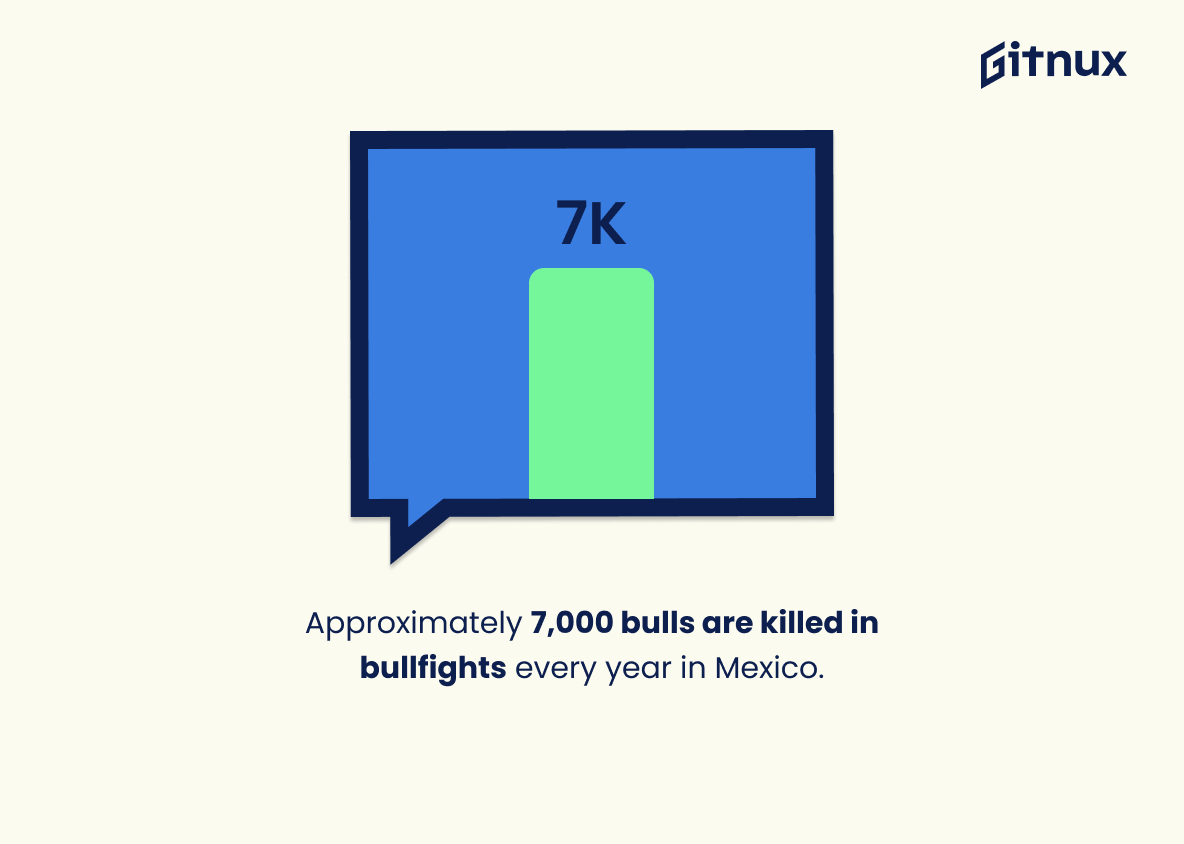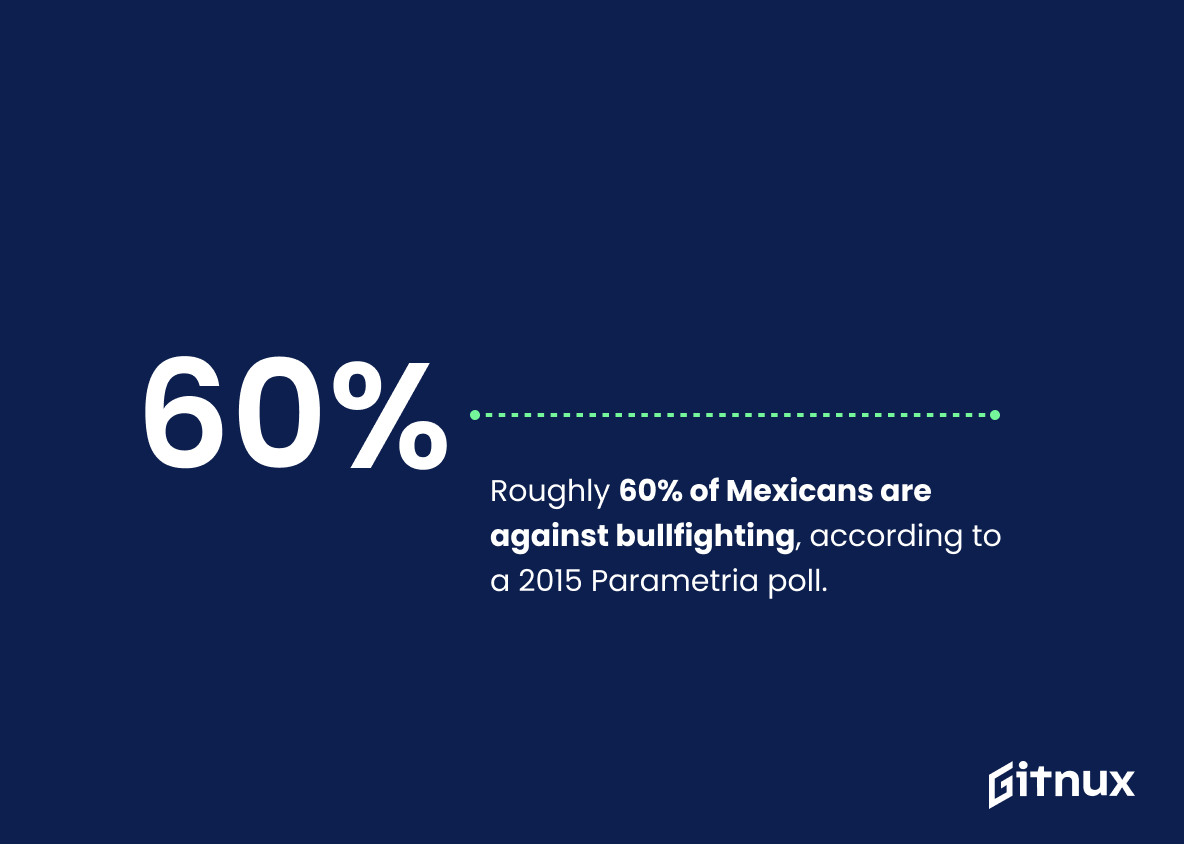Bullfighting is a controversial sport that has been practiced for centuries in many countries around the world. While it may be seen as an important part of cultural heritage by some, others view it as cruel and unnecessary animal abuse. This blog post will explore bullfighting statistics from 8 different countries to provide insight into its prevalence and popularity today. We’ll look at how many bulls are killed each year, what percentage of citizens show interest or opposition towards bullfights, economic benefits generated by this activity, number of events organized annually and more. By examining these facts we can gain a better understanding of the current state of bullfighting worldwide.
This statistic is a powerful reminder of the global reach of bullfighting, highlighting the fact that this controversial practice is not confined to one region or country, but is instead a global phenomenon. It serves as a stark reminder that the fight against bullfighting is a global one, and that the fight must be taken up in all eight countries in order to bring about meaningful change.
Around 250,000 bulls are killed in bullfights each year
This statistic is a stark reminder of the devastating impact bullfighting has on the lives of these animals. It serves as a reminder of the immense suffering inflicted on these creatures, and the urgent need to end this cruel practice.
Bull Fighting Statistics Overview
A total of 533 bullfights were organized in Spain in 2018
This statistic is a telling indication of the popularity of bullfighting in Spain in 2018. It provides a snapshot of the number of bullfights that were organized in the country, giving readers an idea of the scale of the activity. It also serves as a benchmark for comparison with other years, allowing readers to track the trend of bullfighting in Spain over time.
In 2017, the bullfighting and the taurine sector generated more than 3.5 billion euros in Spain
This statistic is a testament to the immense economic impact of bullfighting and the taurine sector in Spain. It is a clear indication of the immense financial value that this industry brings to the country, and the importance of its continued success. This statistic is a powerful reminder of the importance of bullfighting and the taurine sector in Spain, and the need to ensure its continued success.
In 2013, Spain’s economy benefitted from bullfighting by €1.6 billion a year
This statistic is a powerful reminder of the economic impact of bullfighting in Spain. It demonstrates that the activity is not only a cultural tradition, but also a major contributor to the country’s economy. This statistic is a testament to the importance of bullfighting in Spain and its importance to the nation’s financial well-being.
There were around 1,736 bullfighting-related events in Spain in 2020
This statistic is a telling indication of the prevalence of bullfighting in Spain in 2020. It serves as a reminder of the continued popularity of this controversial sport, despite the efforts of animal rights activists to end it. It also provides a benchmark for comparison with previous years, allowing us to track the evolution of bullfighting in Spain over time.
84% of respondents in a 2008 Gallup poll were opposed to public funds being used to support bullfighting
This statistic is a powerful indicator of public opinion on the controversial practice of bullfighting. It shows that the majority of people surveyed are not in favor of using public funds to support this activity, suggesting that the public is not in favor of the practice. This is an important piece of information to consider when discussing the topic of bullfighting and its implications.
77% of the Spanish population under the age of 24 have very little or no interest in bullfighting
This statistic is a telling indication of the waning popularity of bullfighting among the younger generations of Spain. It suggests that the traditional sport is losing its appeal, and that the future of bullfighting may be in jeopardy.
In 2010, Catalonia became the second Spanish region to ban bullfighting
This statistic is significant because it demonstrates that the movement to end bullfighting is gaining momentum. Catalonia’s ban on bullfighting is a major victory for animal rights activists, and it serves as an example for other regions to follow. It also shows that public opinion is shifting away from the traditional practice of bullfighting, and that more people are recognizing the cruelty of the sport.
Since 2010, the Spanish Parliament has granted bullfighting cultural heritage status
This statistic is significant in the context of bullfighting statistics because it demonstrates the Spanish Parliament’s recognition of the cultural importance of bullfighting. This recognition has allowed for the continuation of the sport, as well as the preservation of its cultural heritage. It also serves as a reminder of the long-standing tradition of bullfighting in Spain, and its importance to the country’s culture and history.
In 2018, the sales of tickets for bullfighting events in Spain increased by 12.5%
This statistic is a testament to the enduring popularity of bullfighting in Spain. It shows that despite the controversy surrounding the sport, it still has a large and loyal fan base. This statistic is a reminder that bullfighting is still a major part of Spanish culture and that it is here to stay.
The number of bullfighting events in France increased from 115 in 2017 to 125 in 2018
This statistic is significant in the context of bullfighting statistics because it indicates a growth in the popularity of the sport in France. It suggests that more people are attending bullfighting events, which could be a sign of a resurgence in the sport’s popularity. Additionally, it could be an indication that more people are becoming interested in the sport, which could lead to more bullfighting events in the future.
Bullfighting still occurs in over 40 locations across southern France
This statistic is a stark reminder that bullfighting is still a prevalent activity in many parts of southern France. It serves as a reminder that despite the efforts of animal rights activists, this cruel and outdated practice is still alive and well in many parts of the world.
Approximately 7,000 bulls are killed in bullfights every year in Mexico
This statistic serves as a stark reminder of the devastating impact bullfighting has on the lives of these animals. It paints a vivid picture of the sheer number of bulls that are killed each year in Mexico alone, highlighting the urgent need to take action to protect these animals from this cruel practice.
Roughly 60% of Mexicans are against bullfighting, according to a 2015 Parametria poll
This statistic is a powerful indicator of the public opinion on bullfighting in Mexico. It shows that the majority of Mexicans are not in favor of this activity, which could be a sign that the practice is becoming less popular. This could be an important factor to consider when discussing the future of bullfighting in Mexico.
The number of bullfight forces (bateys) in Colombia decreased from 50 in 2010 to 8 in 2019
This statistic paints a stark picture of the decline of bullfighting forces in Colombia over the past decade. It serves as a reminder of the drastic impact that the sport has had on the country, and the need for further action to protect and preserve the tradition. It also highlights the importance of understanding the current state of bullfighting in Colombia, and the need for further research and analysis to ensure that the sport can continue to thrive in the future.
In Venezuela, more than 100 bulls are killed each year due to bullfights
This statistic serves as a stark reminder of the devastating impact bullfighting has on the Venezuelan population. It highlights the sheer number of bulls that are killed each year in the name of entertainment, and the need for greater awareness and action to protect these animals.
68% of the Portuguese population don’t show any interest in bullfighting
This statistic is a telling indication of the waning popularity of bullfighting in Portugal. It suggests that the majority of the population is not interested in the sport, which could be a sign that the tradition is slowly fading away. This is an important statistic to consider when discussing the future of bullfighting in Portugal.
Conclusion
Bullfighting is a controversial sport that has been practiced in many countries around the world for centuries. While it still remains popular in some areas, statistics show that public opinion of bullfighting is changing and its popularity is declining. In Spain, 56.4% of citizens have no interest in bullfighting while 77% of those under 24 years old feel similarly disinterested. Additionally, 84% of respondents to a 2008 Gallup poll were opposed to public funds being used to support bullfights and 68% Portuguese people don’t show any interest either.
In other countries such as France and Mexico where the practice continues, there are signs that attitudes towards this activity may be shifting too with fewer events taking place each year than before or more regulations put into place by local governments banning certain aspects related to these activities like Catalonia did back in 2010 when they became the second Spanish region to ban bullfighting altogether .
Overall, although there are still places where bulls continue fighting for entertainment purposes every year – resulting on thousands killed annually- , it seems clear from all these statistics presented here that society’s attitude towards this cruel tradition might be slowly but surely evolving over time which could eventually lead us closer toward an end date for this outdated form of entertainment once and for all
References
0. – https://www.worldanimalprotection.org
1. – https://www.thetimes.co.uk
2. – https://www.reportsfromstomfront3.wordpress.com
3. – https://www.statista.com
4. – https://www.plantsanimals.org
5. – https://www.artsandculture.google.com
6. – https://www.reinodeleon.com
7. – https://www.archyde.com
8. – https://www.worldatlas.com
9. – https://www.beyondthebullfight.wordpress.com
10. – https://www.animalequality.org
11. – https://www.huffpost.com
12. – https://www.bbc.com
13. – https://www.peta.org.uk
14. – https://www.forbes.com
15. – https://www.humanesociety.org


